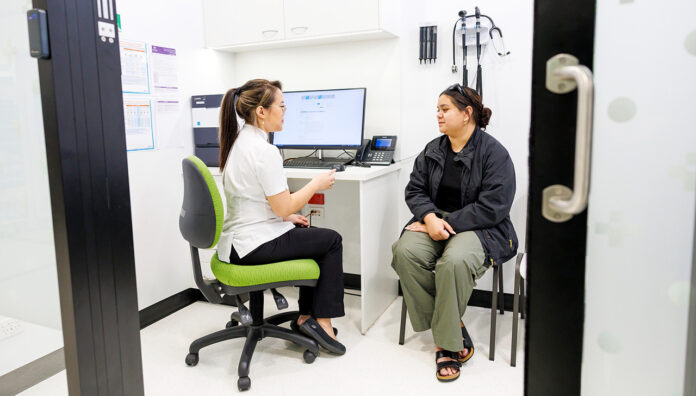Should all pharmacies have an LAIB clinic?

For patients undergoing opioid dependence treatment (ODT), long-acting injectable buprenorphine (LAIB) can be a life-changing therapeutic option.
Since 2020, demand for LAIB has grown steadily, replacing older ODT therapies such as methadone, said John Jones MPS, who administers LAIB at his Shortland, NSW pharmacy.
‘The National Opioid Pharmacotherapy Statistics Annual Data Collection indicates that there is one important growth trend in that space”, he said.
But with changes to the ODT program starting on 1 July 2023 – including new Pharmaceutical Benefit Scheme (PBS) arrangements that allow LAIB to be funded only through hospital or community pharmacies – pharmacists are likely to administer the lion’s share.
To help pharmacists meet this requirement, Australian Pharmacist investigates the pros and cons of LAIB administration for both patients and pharmacists, as well as the intricacies of running an efficient LAIB clinic.
What are the main benefits of LAIB?
To access most ODT therapies, such as methadone sublingual films or buprenorphine and naloxone, patients must visit their community pharmacist up to 30 times a month.
But LAIB’s longer dosing intervals means that patients have to present a lot less often – allowing them to fulfill work or childcare responsibilities, or even go on holiday.
LAIB is a stable and predictable drug, with drug withdrawal reported to be associated with less severe symptoms than discontinuation of other ODT drugs such as sublingual buprenorphine or methadone.
“The risk of diversion is also much lower and allows our patients to lead a more normal life,” Jones said.

The way LAIB is administered also puts it fully in line with other therapies administered in a community pharmacy setting.
“Patients let the pharmacy assistants know they are there for their injection and then they sit and wait,” he said. It is dosed in a private space so patients can receive each injection, which helps remove some of the stigma associated with other forms of opioid substitution.
LAIB administration may also mean less paperwork for pharmacists. “You don’t have the daily signature doses that you do with oral forms,” he said.
However, patient consultations for LAIB may take longer. “Due to the longer period between doses, more information needs to be gathered than in a daily appointment, including establishing the patient’s stability,” Mr Jones said.
Circumstances can also change within monthly intervals, including a decline in mental health. Pharmacists should then contact their wider healthcare team to let them know what has happened.
What LAIB options are available?
There they are three LAIB products currently available in the PBS under a list of opioid addiction s100:
- Buvidal weekly (schedule 5–9 days)
- Buvidal monthly (3-5 weekly schedule)
- Subblockade (26-42 day schedule).
“The subblock has a longer dosing interval … so it might be a better option for patients flying out,” Mr. Jones said. “And shelf life at room temperature just extended from 1 to 3 months”.’
“But it’s a more challenging dose to administer than Buvidal because it is much thicker, the volume is greater and the diameter of the needles is also greater, so all these factors have to be taken into account.’
Who is a good candidate for LAIB?
Patients whose work/life commitments do not accommodate regular dosing would be a good candidate for LAIB, said Mr. Jones.
“While it takes a little work to get started, it eliminates the need to attend every day for dosing,” he said.
Patients who are stable in buprenorphine and naloxone sublingual filmsand some patients taking methadone, orcan be transferred to LAIB. Appropriate clinical guidelines should be followed carefully.
According to the opinion of Mr. Jones, all pharmacies are well placed to administer LAIB – provided they have a trained vaccinator on staff (read AP2023 article for a detailed explanation of state and territory regulations around LAIB administration).
“It’s a very different type of opioid replacement that can be used, and the patient demographics tend to be different as well,” he said. “These patients are receiving and managing their opioid addiction, and they are usually working and caring for children and/or family.”
What do pharmacists need to know?
For those interested in setting up an LAIB clinic, Mr Jones recommends approaching it like any other professional service, such as vaccination.
“Workflow needs, stock, legislation and the booking system all need to be considered,” he said.
“You can basically fall back on other services – by creating a new item called ‘LAIB Injections’ and filling in the blanks around it.”
But because LAIB must be injected subcutaneously, with the risk of serious harm if injected incorrectly, there are some patients that less experienced pharmacists should avoid—at least at first.
“With really thin patients, it’s challenging to find enough fat to inject it,” he said. ‘For example, Buvidal it has to be injected at a 90 degree angle, so with thinner patients this can mean it goes straight into their muscles.’
While the administration technique is developed with expertise, which can be aided by obtaining some demonstration equipment from the manufacturer, Mr. Jones recommends carefully choosing the patient’s demographics at the outset. “Anthropometry is important in this circumstance,” he added.
Communication with the patient about professional service delivery is also important for those who may be fearful.
“Having confidence and providing a little more context and structure for patients takes away some of the anxiety that can be associated with other forms of opioid substitution,” Jones said.
It is essential that LAIB injections are never handled, or directly accessible by patients. Pharmacists should have procedures in place to prevent this, ensuring they are never dispensed directly to the patient or carer.
What are some helpful resources?
Vaccinating pharmacists interested in administering LAIB will be well prepared to do so after participating Sharp end of LAIB seminar at PSA24, led by Mr. Jones on Sunday 4th August from 1.30pm-3.30pm.
“There will be several demonstrations of LAIB administration, along with practical examples of how to set up a service, what documentation to complete and other advice on policies and procedures to consider and implement,” he said. . .
One-day registration to attend PSA24 is also available. But to avoid late fees, it’s essential to book your place before midnight on July 25. Those unable to attend the conference may also complete PSAs Administration of long-acting injectable buprenorphine (LAIB) by pharmacists course.